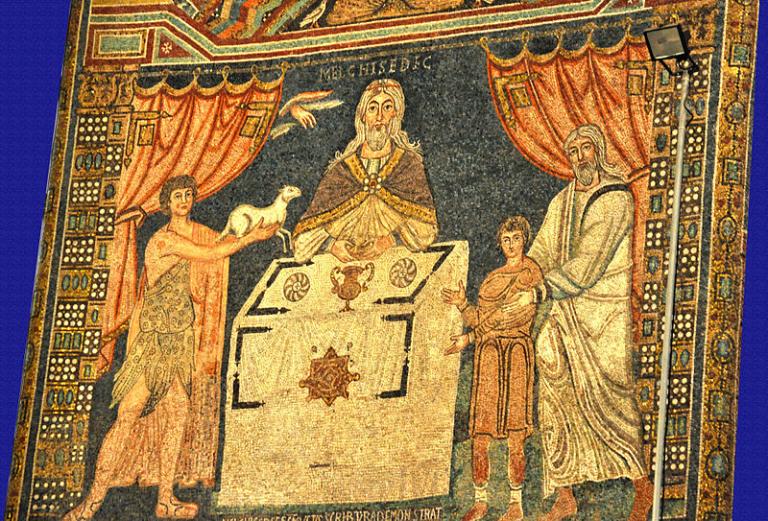
As I almost always am with this series of reflections, I’m acutely aware of how much there is in this chapter that I’m ignoring for now — and that there is certainly a great deal of richness, insight, and depth that I haven’t noticed — but my self-imposed rule is that I’ll only comment on one or two things, and that I’ll only do so briefly. If posting these daily comments were to become too burdensome, I wouldn’t be able to do them at all. My thought is that I may yet have a few years left in my state of advanced geezerhood, and that I’ll do several more passes through, adding (and perhaps modifying) each time.
Anyway, with that preface, off we go to today’s reading, which is Alma 13:
My attention is arrested already in the first verse, which reads, in part, “I would that ye should remember that the Lord God ordained priests, after his holy order, which was after the order of his Son.” (Compare Alma 13:2, 6-10, 14, 18.)
It’s impossible not to think, in this context, of Doctrine and Covenants 107, which, according to the notes that precede it, incorporates a revelation that was associated with the organization of the Quorum of the Twelve, in February and March of 1835. Section 107 was read to those who were due to depart on their missions on 3 May 1835. However, some of it — passages that occur in verses 60-100 — may already have been received on 11 November 1831, roughly a year and a half after the publication of the Book of Mormon. But not the verses with which I’m concerned here:
1 There are, in the church, two priesthoods, namely, the Melchizedek and Aaronic, including the Levitical Priesthood.
2 Why the first is called the Melchizedek Priesthood is because Melchizedek was such a great high priest.
3 Before his day it was called the Holy Priesthood, after the Order of the Son of God.
4 But out of respect or reverence to the name of the Supreme Being, to avoid the too frequent repetition of his name, they, the church, in ancient days, called that priesthood after Melchizedek, or the Melchizedek Priesthood.
5 All other authorities or offices in the church are appendages to this priesthood. (Doctrine and Covenants 107:1-5)
I’m struck by that phrase “the Holy Priesthood, after the Order of the Son of God,” which echoes but doesn’t explicitly quote Alma 13:1’s “priests, after his holy order, which was after the order of his Son.” Or, maybe more likely, Alma 13:1 foreshadows Doctrine and Covenants 107:3. After all, Alma doesn’t really explain the significance of his precise language at all, and yet it appears to be significant (and Doctrine and Covenants 107:1-5 shows that, in fact, it is). And, importantly, both Doctrine and Covenants 107 and Alma 13 are expressly connected with Melchizedek.
If we presume that Joseph Smith was actually making this stuff up on the fly, he seems to me an astonishing impressive character. (Especially in view of the life that he led, which was scarcely one of leisured literary reflection.) There’s so much that he had to keep in his head in order to continue churning these texts out at remarkably high speed!










